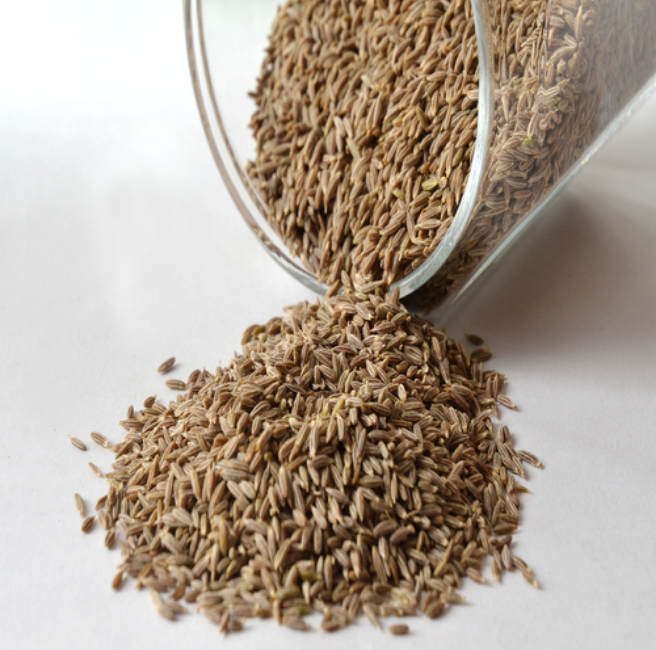Cumin

Cumin
Arabic – كمون
Dutch – komijn
Russian – тмин
Spanish – comino
Description:
The dried fruit of a small herbaceous plant, cumin was quite popular even during the Biblical times as an efficient digestive and as a food flavour for ceremonial feasting. Though native to Egypt and the Mediterranean, cumin is now mostly produced in India. Cumin has an intensely strong flavour, much similar to caraway. Indian cumin finds worldwide use in foods, beverages, liquors, medicines, toiletries and perfumery.
The spice is of particular value in the blending of Indian curry powder. Indian cumin grows abundantly in the mild, equable climate of Gujarat, Rajasthan and Uttar Pradesh where rich, well-drained, sandy, loamy soil and the sunny, conducive environment are available. The quality is better by the organic cultivation adopted by Indian farmers. Indian cumin is exported in its natural as well as powdered form, besides as essential oil. Exports are mostly to USA, Singapore, Japan, UK and North Africa.
Regarded as the speed spice, cumin seeds are largely grown in hot climates. India is the leading producer and consumer of the commodity. Gujarat along with Rajasthan is the leading cultivator of the spice. Gujarat has good normal rains which makes it preferable to other states. Rajkot is regarded as one of the major terminal markets for Cumin seeds. Needless to say we are based in Rajkot and can procure the best cumin seeds for export.
Cumin is a seed spice well known for its medicinal properties in India and many other Asian countries. A native of the land of Mediterranean, Cumin is now grown mainly in India, Egypt, Syria, Turkey, China and parts of America.
A speed spice, cumin is grown mainly in hot climatic conditions. India is the largest producer and consumer of Cumin in the world. Indian output is currently estimated to be around 200,000 ton per year. Gujarat and Rajasthan are the major production centers of the spice in the country.
West Bengal, Uttar Pradesh, Andhra Pradesh and Punjab also make significant contribution to Indian output. Global output of cumin seed is estimated to be less than 300,000 ton per year with bulk of the output concentrated in Asian countries. Global demand as per export of cumin is estimated to be around 30,000 to per year. Since India is the largest producer and consumer, the price formation of cumin is mainly determined by domestic factors.
However, seasonal nature of the crop and fluctuations in global demand and supply also influences the price in the country. In India, Cumin is sown in October-November and harvested in February. Fresh crop generally reaches the market during March. Unjha in Gujarat is the main trading centre for Jeera in the country. Delhi, Jaipur and Rajkot are also known as major terminal markets for Jeera. Our exports of cumin mainly to the US, UK, Japan, Brazil, Singapore and many other countries.
Specification
| Purity | 99%, 98%, 99.50% (Singapore/Europe) |
| Total ASH | 9.50% Max |
| Acid insuluble | 1.75% Max |
| ASH Flavour | Aromatic with a Penetrating Flavor |
| Moisture | 10% Max |
| Salmonella | Absent/25 gms |
| Moisture | 8% Max |
| Salmonella | Absent/25 gms |
| Volaile Oil | Min 2.00 ml/100 gms |
| Packing | 15, 25, 40 Kg PP Bags |
| Type | Machine cleaned / Sortexed / Extra Bold |

